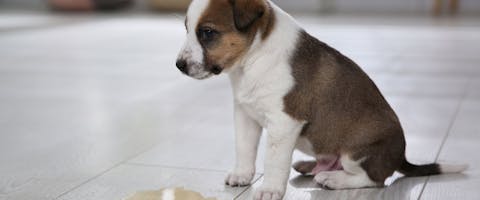Updated 30 July 2025
Firstly, congratulations on welcoming a new puppy into your home! Second, it’s now time to learn how to potty train a puppy. And thankfully, you’re in the right place - below is our full guide to puppy toilet training. We explore the signs your puppy needs the toilet, when to take them out, a schedule for toilet training a puppy, the importance of crate training and positive reinforcement, and so much more.
So, arm yourself with a whole lot of patience, as you start your journey into learning how to house train a puppy, starting with our tips and advice below.
How to know when your puppy needs to go to the bathroom
One of the first steps when learning how to potty train a puppy is to understand the signs that your puppy needs to use the bathroom. Take a note of these below:
- Looking around anxiously
- Sniffing in corners and behind furniture (they’re looking for a suitable spot)
- Spinning in circles
- Fidgeting or moving between activities
- Whining
- Pacing around
Look out for these signs that your puppy needs to go potty, then encourage them over to their proper toileting place. Don’t carry them, as they’ll develop more confidence in their own bladder and bowel control if they can walk there themselves.
When to take your puppy to toilet
As with all parts of the dog training process, toilet training a puppy means having a strict schedule. Take your puppy out to go potty at fixed times of the day to avoid accidents, and to help them create a potty routine. Below are a few suggestions on when to encourage your puppy to go to the toilet:
- First thing in the morning, after they wake up
- After food and drink
- After any naps
- After a playtime
- Just before bed (as late as you can, if you want a peaceful night!)
- And in the case of smaller pups, in between all these times, too. We know this sounds like an awful lot of trips to the garden or other toilet area, but it really will be worth the patience in the end.
Trending posts
Purr-use some of the top blogs our members have been loving this month- Top male dog names for your new furry friendGot a new furry family member in your pack? Check…
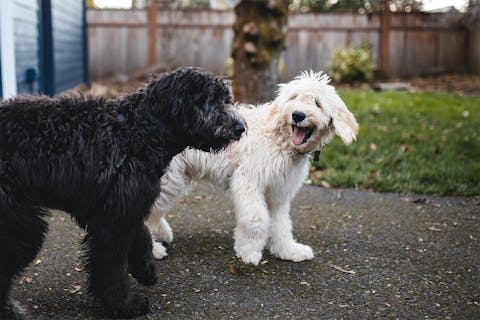
- Top female dog names for your new fluffy palWelcoming a new pooch into your family? Explore…
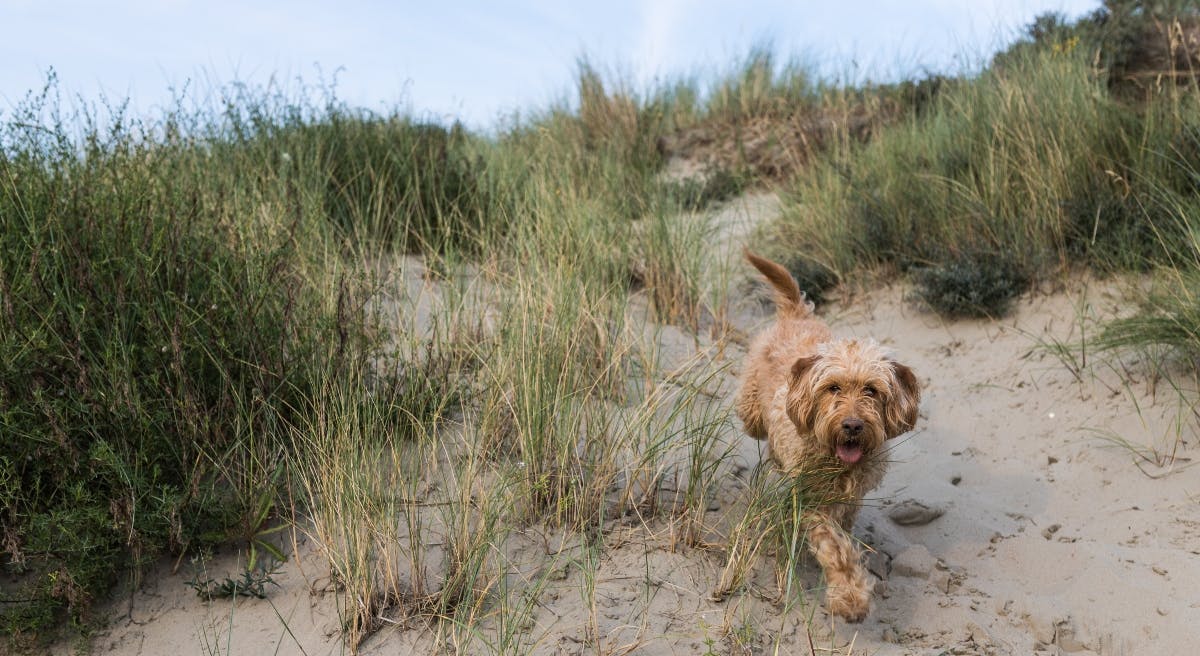
- 250+ gray cat names your silver feline will loveRecently welcomed a fluffy gray bundle of joy into…

- What are normal pet sitting rates?Discover the average pet sitting rates for animals…
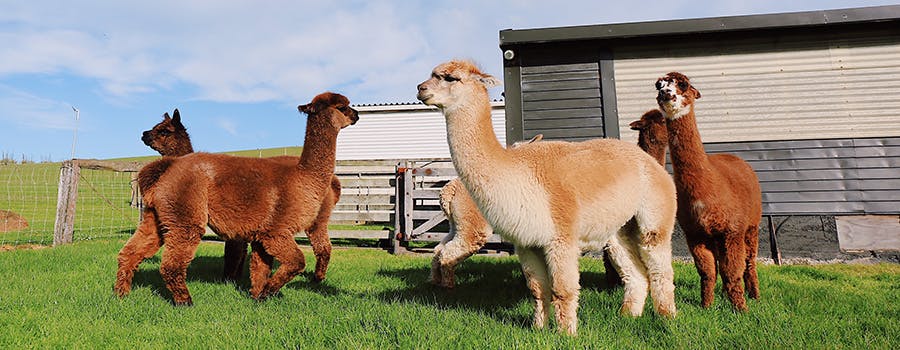
- Unique dog names to stand out from the packDare to be different with our list of the best…
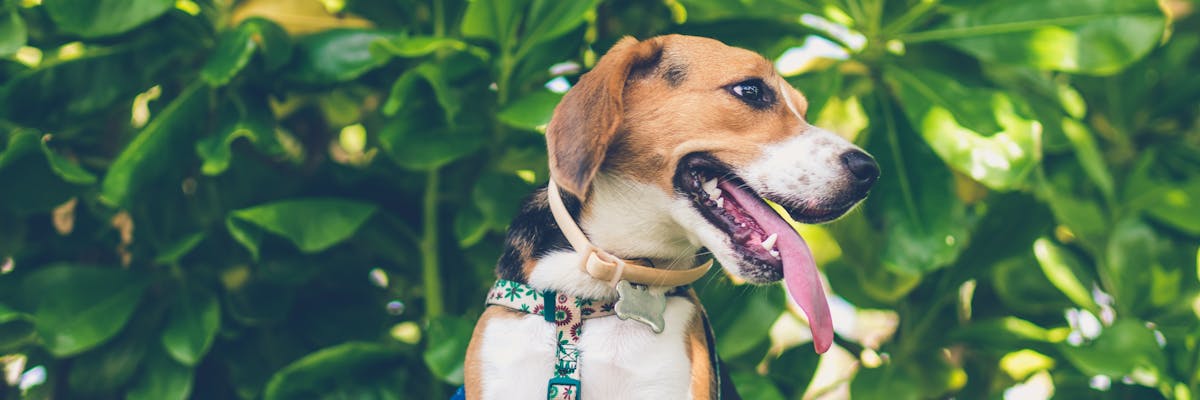
Steps for potty training a puppy
Before you start toilet training your puppy, have a clear training plan in place. You can start toilet training at between 12 and 16 weeks. Before this, they don’t really have enough control over their bladders and bowels to be able to “hold it in”. A good puppy toilet training plan has these key steps:
1. Choose the right potty spot
Before learning how to train a puppy to use the toilet, you’ll need to choose a potty spot - where you’d like your puppy to relieve themselves. The surface they use is very important to most dogs, and, if you adopted your pooch, the kennel should be able to advise on an older dog’s preferences. The scent of wee will start to build up associations, so using the same part of the garden can be helpful (and that’s why we need to thoroughly clean after an accident in the wrong place).
2. Prepare your home
Bathroom training dogs starts with preparing your home, and that might involve covering precious rugs, or shutting off rooms with particularly nice carpet. Make sure you have all the toileting equipment to hand, and that access to your chosen outside door is always clear (in case of emergency dashes).
3. Follow the toilet routine
A clear dog potty training schedule is reassuring for a puppy and helps to prevent any anxious accidents. The more secure and happy your pup feels, the more successful the training will be. So, pick a routine that suits you both, and stick to it.
4. Teach associations
When potty training a puppy, it’s important to help your dog associate the right potty spots with going to the toilet. Your puppy may not initially realise that they’re outside to wee or poo. In fact, at first, they’re more likely to scamper around with excitement, exploring this massive and fun new world. Just sit calmly if this happens, and if you ignore them, they’re more likely to go to the toilet. When they do wee or poo, provide lots of praise and they’ll gradually associate the right potty spot with using the toilet.
5. Use cues
Start to use words like “wee wee” when they perform in the right place, to increase this association. Use praise when they get it right and maybe give them a reward, such as a play with their favourite toy. Don’t be tempted to use a food treat.
How to deal with accidents during puppy toilet training
Teaching your puppy to go potty in the right place at the right time inevitably results in a few accidents. It’s important that dog owners and pet sitters stay calm, stick to the potty routine, praise for the right behaviors and never punish their puppy for accidents.
If you catch your puppy in the act of toileting in the wrong place, clap to get their attention, then take them outside to their usual spot. Hopefully they will finish their pee or poo in the right place, and you can reward them with cuddles and praise. Yes, you might get wee on you, so be prepared to launder plenty of clothes during this stage.
It’s a bit different if you spot the wee at the puddle rather than at the performance stage. Clean up thoroughly, using a product that doesn’t contain ammonia (this smells a bit like wee to a dog). Don’t make a fuss or tell the dog off. Simply clean it, and move on.
Hopefully, you’ll experience fewer accidents as the training continues. If you have any concerns about this, speak with your vet.
The importance of a crate for puppy potty training
Potty and crate training a puppy can go hand-in-hand, and crate training can help your puppy to understand that there are different areas of the home for resting and going to the toilet. Adorn the crate with your puppy’s favorite things, and praise them when they enter it themselves. Alongside this, stick to your puppy’s potty training routine, and praise them when they poop or pee in the right place. Your puppy may have an accident in their crate, and it’s important you wash any smells away so that they don’t associate the crate with going to the toilet. Eventually - with patience, your puppy will associate their crate with relaxation and safety, and their potty spot with going to the bathroom.
The importance of a feeding schedule when puppy potty training
Your puppy’s feeding schedule affects their potty schedule, so feed your puppy roughly three meals per day, and take your puppy out to potty after meal times. If you’re unsure about what to feed your puppy or you’re worried about their stool, speak to your veterinarian.
The importance of positive reinforcement for potty training a puppy
Successful potty training is rooted in patience, consistency and positive reinforcement. Praising your puppy when they use the toilet in the right place is vital for helping your dog understand where they’re supposed to pee and poop. Be sure to positively reinforce the behavior immediately after your puppy has been to the toilet in the right place, so that they associate the right behavior with the praise.
This could look like petting your puppy, having a cuddle, or giving them access to their favorite toy for a few minutes.
What not to do while potty training a puppy
When we’re thinking about how to toilet train a puppy, what not to do can be as important as what to do. Here’s a rundown on things to avoid when housebreaking a puppy:
- Never shout or punish your puppy. As we mentioned earlier, this doesn’t help and will just stress out your puppy.
- Don’t rub their noses in it. This really, really doesn’t work.
- Be picky with your cleaning products. Don’t use ammonia-based cleaners, as they smell of urine and will encourage your dog to wee in that place again.
- Avoid rushing. Never rush them during their potty trips.
- Don’t change your routine. This will confuse the pup and lead them to unlearn behaviors.
Keep being gentle and patient with your puppy and they’ll learn much faster. Dogs respond to kindness and calm tones, and even if you don’t feel especially calm while mopping up pee, an outwardly relaxed demeanour will really help.
Soon, those little puddles and dashes to the door will be a thing of the past. Dogs are wonderfully intelligent pets who love to learn and please, which is really reassuring to know when you embark on your puppy toilet training journey together.
How long does it take to toilet train a puppy?
New dog owners often ask, “How long does it take to toilet train a puppy?”, often when they’re on their hands and knees, scrubbing up that morning’s third puddle. The unhelpful answer is, as long as it takes - a trained puppy takes patience. All dogs are different, and the length of time it takes to get your dog house trained depends on their past experiences, and your approach to puppy potty training.
Typically speaking, it takes a dog between four and six months to go from uncontrolled puppy weeing to being completely housetrained. Some experts say that many dogs aren’t fully trained until they’re at least a year old.
So, if you see any articles called something like “How to toilet train a puppy in 7 days”, just be aware that while all tips are helpful, successful training within a week is extremely rare.
Toilet training speed varies between breeds, too. Some types of dog are simply easier to train than others. Plus, think about bladder size: a Great Dane can hold a lot more than a Daschund. A tiny pup may need more trips outside during training.
Useful resources
- How to crate train a dog or puppy: vet-approved steps
- 10 reasons why a trained dog is a happy dog
- Puppy training for beginners: how to train a puppy
- How to house train an adult dog: bathroom training dogs
- Dog recall training: how to train a dog to come when called
- 10 good dog training books on behavior and training
- 14 reasons dogs are the best pets: benefits of having a dog

